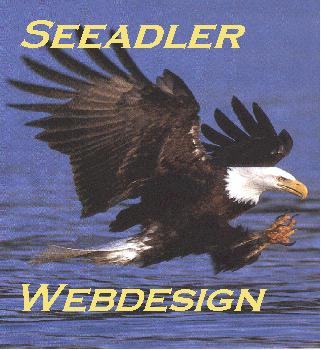For centuries, artisans shaped, fitted and assembled timber into wooden
boats. Builders developed
sophisticated wood construction methods, but never overcame wood's
susceptibility to rot and
significant maintenance requirements. The development of fiber reinforced
plastics (FRP) offered
apparent solutions in new materials and techniques. The explosive growth
of fiberglass-polyester
boats over the last thirty years was built on the perception of low
maintenance and easy fabrication.
However, as with wood, polyester resins have been plagued by the effects
of moisture penetration.
The problems of rot and softening were replaced by hydrolysis, blisters
and delamination. The
solution to these problems lies in epoxy composite construction.
WHAT IS EPOXY COMPOSITE CONSTRUCTION?
Epoxy composite construction consists of bonding all of the materials
and parts of the craft together
with epoxy resin. The resulting structure has physical characteristics
superior to the components by
themselves. Composite construction includes a variety of building methods
that use epoxy to protect
the materials from moisture as well as hold the materials together.
Epoxy resins, the key ingredient,
are among the most versatile of thermoset plastics. They bond exceptionally
well to a wide range of
materials and are highly moisture resistant. Compared to polyester
resins typically used in fiberglass
boat construction, epoxies have greater strength, less shrinkage, better
moisture resistance and better
fatigue resistance.
A NEW INTEGRATED MATERIALS TECHNOLOGY
Combining the best of wood technology with the advances in FRP materials
and processes, leading
builders have turned to composite construction to produce durable,
distinctive boats. Builders use
the moisture resistant qualities of epoxy to take advantage of wood's
strength, stiffness, light weight,
resistance to fatigue, insulating ability, availability, cost, and
beauty. Epoxy's excellent adhesion to
balsa and plastic foam cores, glass, aramid and carbon fabrics, allows
the builder the advantage of
selectively integrating these materials into the boat's structure.
Designers, builders and owners have
more choices available. Through epoxy composite construction, the builder
can offer boats in a wide
range of designs, materials and construction methods.
WHAT ARE THE ADVANTAGES OF EPOXY COMPOSITE CONSTRUCTION?
Versatility
The builder using composite technology can build crafts with a range
of materials, designs, and
construction methods that are perfectly suited to the craft's use and
the customer's needs. Everything
from strip canoes to work boats, high performance multihulls to offshore
racing powerboats and
Hovercraft's have been built using epoxy composite construction. Composites
can be uncomplicated
structures of wood and wood veneer or complex vacuum laminated hybrids
incorporating glass
fabrics, aramid, or carbon fibers.
Lower Maintenance
All of the components in a composite craft are protected by an epoxy
moisture barrier. Since the
moisture content is stabilized, the maintenance problems associated
with wooden boats - rot, joint
cracks, structural members swelling or shrinking, and surface checking
- are eliminated. Epoxy
provides a stable base for paints and varnishes, reducing the frequency
of refinishing. In glass
laminated boats, epoxy's superiority to polyester resins as a stable
moisture resistant adhesive
reduces the possibility of delamination and gel coat blistering caused
by moisture penetration.
A History of Success
Epoxy composite construction techniques for boat building were first
developed over thirty years
ago. Over the years, thousands of composite recreational and working
boats have been built and the
earliest are still going strong. Composite construction has proved
itself at the top levels of
competition in sail and powerboat racing, in the harshest environments
and under the toughest
working conditions. Epoxy composite boats have set a standard for performance,
reliability and
beauty.If you have still some questions to this topic - post it at
our Messageboard!
There are certain rules in the use of epoxy resins which you are not allowed to break :
Temperature - is one of the major ones .... choose the correct resin and hardener for the temperature of your workplace ! Not only during the application ... till the resin has set totally which is under normal conditions 24 hours but could be up to 7 days !
Mixing ratio - epoxy resins are not like polyester resins - just a bit more and it will only cure quicker ... try to stay within the 5% +/- range ... which will bring you finally into 10% which is just fine ... besides mixing pumps ( which make a good job as long as the container is not nearly empty ) mixing cups ( which are really only on the first mix accurate ) the best is still in your wife's kitchen ... get the weigh scale and double check !
The beauty of a clean workplace - if you
can't work clean ... just don't work at all and give the
job to somebody who can ... you safe under the line more money and
it is your health at risk , these resins are still chemicals with a certain
degree of danger to your health !
Humidity - to your work piece and in the composite materials - once water is trapped behind a epoxy barrier it is there for ever and can make major trouble ... ( my son made a tiny hole in the fiberglass resin coat at our crossbeam - since the wood fibers run lengthwise after 4 month a 15' crossbeam was ready to replace - rot)
Screw and nail holes - if you work composite - work composite ... screw and nail holes are a major nightmare in a composite construction - just try to avoid them since they don't give you any extra strength just for moisture the possibility to travel from one sealed work piece to another one ... as long as the hole is, it is like a subway tunnel for water !
Still it is one of the best materials on this planet for high strength - low weight crafts!
|
FastCounter by LinkExchange Since 01.01.1999 |
 |
for your interest in our pages! |